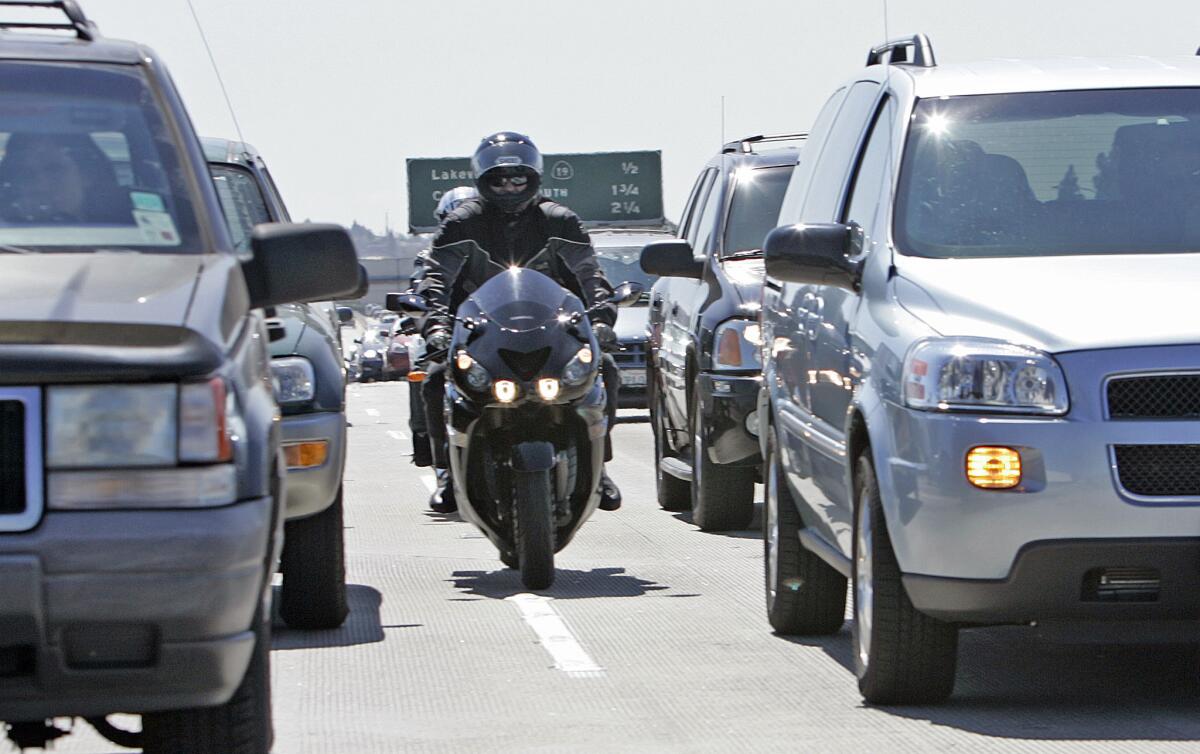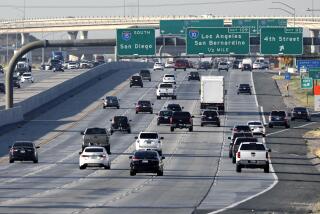Lane-splitting is safe, but with speed comes danger, study finds

- Share via
For years, there has been debate about whether the practice of motorcyclists beating slower traffic by driving between lanes is dangerous. A UC Berkeley study released this week provides some possible answers.
What is lane-splitting?
Lane-splitting is the practice of motorcyclists riding between marked lanes, typically to pass slow-moving or stalled traffic.
Is it legal?
California is the only state that allows lane-splitting by motorcyclists, though technically state law neither prohibits nor permits “motorcycles from passing other vehicles proceeding in the same direction within the same lane,” according to the California Highway Patrol.
Why do some drivers think its dangerous?
Many motorists say its difficult to spot lane-splitters who speed between cars, increasing the risk of accidents.
What does the UC Berkeley study reveal?
The study, which reviewed thousands of accident reports from around the state, found that lane-splitting is no more dangerous than riding a motorcycle in a marked lane.
The study did show that lane-splitters who ride at speeds 10 mph faster than the traffic they are passing do stand a greater risk of being in an accident. Researchers also found that lane-splitters are more likely to rear-end another vehicle than vice versa. Moreover, the data showed that the chances of lane-splitters getting into accidents is greatest in the early morning and late afternoon — rush hour.
So lane-splitting is generally safe as long as it’s done at a reasonable speed.
What happens next?
The data from the study is being shared with the CHP, which this year began working on guidelines for lane-splitting. A more in-depth study of the practice is also in the works.
Sources: UC Berkeley, California Highway Patrol, California Office of Traffic Safety
Follow the reporter @newsterrier or email [email protected].
More to Read
Sign up for Essential California
The most important California stories and recommendations in your inbox every morning.
You may occasionally receive promotional content from the Los Angeles Times.











